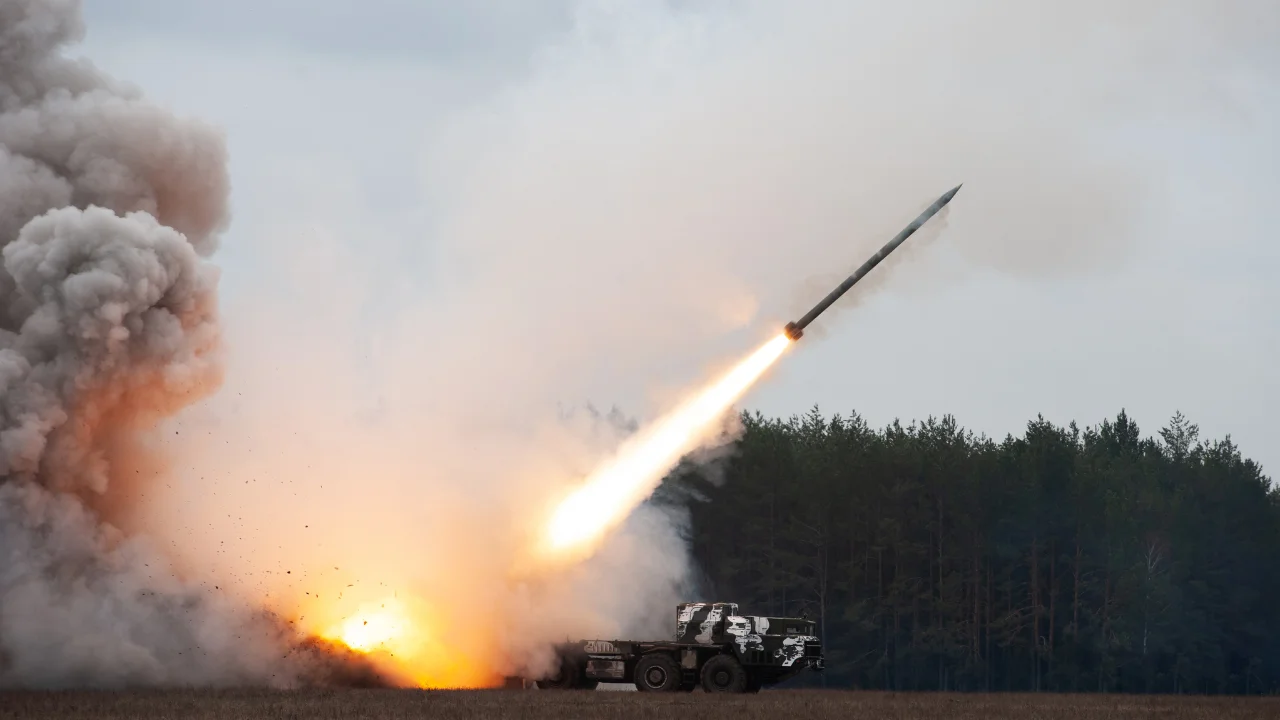Difference Between a Cruise Missile and a Ballistic Missile
Cruise missiles and ballistic missiles are both powerful weapons, but they take very different approaches to reaching their targets. Here’s a breakdown of each and how they compare:
Cruise Missiles
- Flight: Powered throughout by a jet engine, similar to an airplane. This allows for long-range and maneuverability, following the contours of the terrain to avoid detection by radar.
- Speed: Can be subsonic (slower than sound), supersonic (faster than sound), or even hypersonic (extremely high speeds).
- Launch platform: Can be launched from ground vehicles, ships, submarines, or even airplanes.
- Warhead: Carries a variety of warheads, including conventional explosives or even non-lethal payloads.
Types of Cruise Missiles
Cruise missiles are classified based on their launch platform, range, and speed.
- Launch Platform:
- Air-launched cruise missiles (ALCMs) are launched from airplanes. They can be launched from strategic bombers or fighter jets.
- Ground-launched cruise missiles (GLCMs) are launched from mobile launchers or fixed installations on land.
- Sea-launched cruise missiles (SLCMs) are launched from surface ships or submarines.
- Range:
- Short-range cruise missiles (SRCMs) have a range of less than 300 kilometers (186 miles).
- Medium-range cruise missiles (MRCMs) have a range of 300 to 1,000 kilometers (186 to 621 miles).
- Long-range cruise missiles (LRCMs) have a range of more than 1,000 kilometers (621 miles).
- Speed:
- Subsonic cruise missiles fly slower than the speed of sound (Mach 1).
- Supersonic cruise missiles fly faster than the speed of sound (Mach 1 to 5).
- Hypersonic cruise missiles fly at extremely high speeds, exceeding Mach 5.
Indian Cruise Missiles
- BrahMos: A supersonic cruise missile jointly developed by India and Russia. It can be launched from land, sea, and air platforms and has a range of around 290 kilometers.
- Nirbhay: A subsonic cruise missile developed by India. It has a range of around 1,000 kilometers and can be launched from land or sea platforms.
Ballistic Missiles
- Flight: Powered by a rocket only during launch, then follows a high, arcing trajectory under the influence of gravity. Think of throwing a rock really high in the air – that’s the basic idea.
- Speed: Extremely fast, especially during re-entry into the atmosphere.
- Launch Platform: Typically launched from fixed or mobile ground installations.
- Warhead: Primarily designed for large, conventional, or nuclear warheads.
Types of Ballistic Missiles
Ballistic missiles are classified based on their range.
- Short-range ballistic missiles (SRBMs): These missiles have a range of less than 1,000 kilometers (621 miles). They are typically used for tactical strikes on the battlefield.
- Medium-range ballistic missiles (MRBMs): These missiles have a range of 1,000 to 3,500 kilometers (621 to 2,175 miles). They can be used for both tactical and theater-level strikes.
- Intermediate-range ballistic missiles (IRBMs): These missiles have a range of 3,500 to 5,500 kilometers (2,175 to 3,418 miles). They are no longer produced due to international treaties, but some countries still have them in their arsenals.
- Intercontinental ballistic missiles (ICBMs): These missiles have a range of more than 5,500 kilometers (3,418 miles) and are capable of striking targets across continents.
Indian Ballistic Missiles
- Prithvi: A series of short-range ballistic missiles (SRBMs) developed by India. The Prithvi-I, II, and III have ranges of up to 350 kilometers.
- Prahar: It is a short-range, solid propellant, a road-mobile ballistic missile designed for tactical strikes against close-range targets. Prahaar Development India began developing the Prahaar to replace its shorter-range Prithvi-1.
- Dhanush: A land-mobile, single-stage, liquid-fueled ballistic missile derived from the Prithvi-III missile and designed for use against naval targets. It has a range of up to 350 kilometers.
- Agni: A series of intercontinental ballistic missiles (ICBMs) developed by India. The Agni-I, II, III, IV, and V have ranges that vary depending on the specific variant but can reach up to 5,000 kilometers.
Key Differences Between Cruise Missiles and Ballistic Missiles
Here’s a quick comparison to highlight the key differences:
| Feature | Cruise Missile | Ballistic Missile |
|---|---|---|
| Flight Path | Low-flying, maneuverable | High, arcing trajectory |
| Propulsion | Jet engine throughout the flight | Rocket in the launch phase, then ballistic |
| Speed | Subsonic, supersonic, or hypersonic | Extremely high, especially during re-entry |
| Launch Platform | Ground, sea, air | Primarily ground-based |
| Warhead | Conventional or non-lethal | Conventional or nuclear |
Conclusion – Cruise Missiles and Ballistic Missiles Differences
- Cruise missiles are like jet-powered airplanes that deliver a precise punch.
- Ballistic missiles are like super-fast, high-altitude rockets designed for maximum destructive power.
- IBPS AFO Bank Wise Vacancy 2025 Out, Check Complete List
- SSC JE Previous Year Question Papers, Download the Free PDF
- IBPS AFO Bank Preference List 2025, Get Participating Banks List
- IBPS AFO Documents Required for Interview 2025, Complete List
- IBPS AFO Books 2025, Check Complete List of IBPS AFO Books
- IBPS AFO Full Form, Know Everything on AFO Full Form
FAQs – Differences Between a Cruise Missile and a Ballistic Missile
Ans. Cruise missiles are unmanned, self-propelled weapons that fly at low altitudes and follow a pre-programmed flight path to strike targets with high precision. They can be launched from various platforms, including ships, submarines, aircraft, and ground-based launchers. Cruise missiles are known for their versatility and ability to deliver conventional or nuclear payloads over long distances with accuracy.
Ans. Ballistic missiles are powered, guided projectiles that follow a ballistic trajectory, which involves launching into the atmosphere, reaching suborbital or orbital space, and then re-entering the atmosphere to hit their target. They can carry both conventional and nuclear warheads and are capable of striking targets thousands of kilometers away. Ballistic missiles are classified based on their range, including short-range, medium-range, intermediate-range, and intercontinental-range missiles.
Ans. Cruise missiles and ballistic missiles differ in their flight characteristics. Cruise missiles fly at low altitudes and can navigate along a predetermined path, often hugging terrain or following a specific route. On the other hand, ballistic missiles follow a high, arching trajectory before descending towards their target at immense speeds.
Ans. Both cruise and ballistic missiles can carry various payloads, including conventional explosives, nuclear warheads, chemical or biological agents, and precision-guided munitions. The choice of payload depends on the missile’s intended purpose, whether for strategic deterrence, tactical strikes, or reconnaissance.

Hello, I’m Aditi, the creative mind behind the words at Oliveboard. As a content writer specializing in state-level exams, my mission is to unravel the complexities of exam information, ensuring aspiring candidates find clarity and confidence. Having walked the path of an aspirant myself, I bring a unique perspective to my work, crafting accessible content on Exam Notifications, Admit Cards, and Results.
At Oliveboard, I play a crucial role in empowering candidates throughout their exam journey. My dedication lies in making the seemingly daunting process not only understandable but also rewarding. Join me as I break down barriers in exam preparation, providing timely insights and valuable resources. Let’s navigate the path to success together, one well-informed step at a time.






